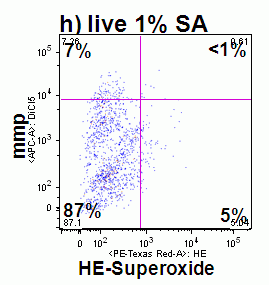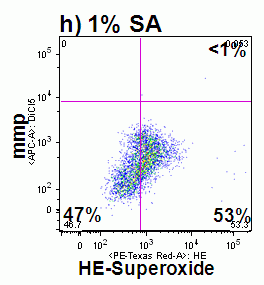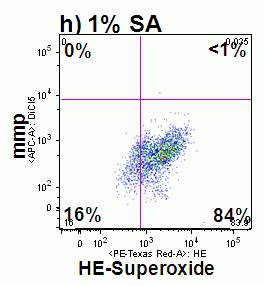Organelle Function - Reactive Oxygen Species
Reactive oxygen species (ROS) include a variety of molecules not only superoxide anion and hydrogen peroxide but singlet oxygen, peroxynitrite anion, hydroxyl radical and nitric oxide. These ROS molecules are produced normally and in disease states.
Superoxide is also produce during oncosis and can be detected by dihydrogenated version of ethidium, dihydroethidium. This dye is oxidized by superoxide releasing ethidium which then fluoresces when bound to cellular DNA.
Cells after treatment with various oncotic agents such as heat shock, sodium azide and Triton X-100 can be labeled with annexin V and a viability dye. They can also be loaded with HE to detect superoxide in live, annexin V-binding cells and dead cells.
e.g. Detection of HE in live cells
Protocols:- Superoxide HE;



